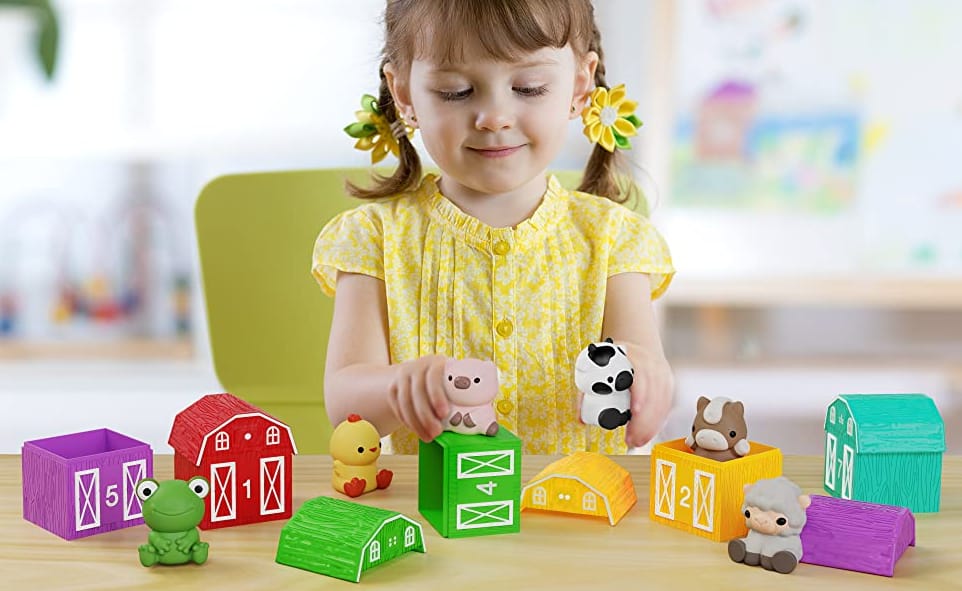For youngsters that have begun their journey of exploration, educational toys for 2 to 3-year-olds are food for curiosity. Play-based learning is crucial for the development of young children. In the age range of 2 to 3 years old, hands-on playthings play a vital role in facilitating learning and growth.
Let’s discuss how these toys engage children actively and provide valuable opportunities to explore, create, and learn through play.
The Value of Hands-On Play
By engaging with toys directly, children enhance their problem-solving skills, stimulate their creativity, and develop essential motor skills. This type of play encourages active thinking and learning, helping children become more curious, confident, and independent.
Sensory Toys for Exploration and Discovery
These toys engage multiple senses, allowing children to explore and discover their surroundings. Texture boards, wooden educational toys, sensory bins, and playdough are excellent examples that enhance tactile, visual, and auditory experiences.
Building and Construction Toys
Building and construction toys are essential for developing spatial awareness, creativity, and fine motor skills. Large blocks and magnetic tiles, for instance, enable children to experiment with shapes, sizes, and structures, enhancing their problem-solving abilities.
Puzzles and Sorting Activities
Puzzles challenge young children to think critically, recognize patterns, and develop logical reasoning. Age-appropriate puzzles bright colors and simple shapes are perfect for 2 to 3-year-olds.
Art and Craft Materials for Creative Expression
Art and craft materials offer a wonderful avenue for hands-on learning and creative expression. Ginger painting and playdough modeling enable children to explore colors, textures, and shapes, fostering their imagination and fine motor skills. Creative expression through art also enhances emotional development, as children learn to express their thoughts and feelings.
Role-Playing and Pretend-Play Toys
Role-playing and pretend play are essential for social and emotional development. Toys like dolls, toy kitchens, and dress-up clothes encourage imaginative play and help children understand various roles and emotions. Children can develop empathy, communication skills, and an understanding of the world around them.
Choosing Age-Appropriate, High-Quality Educational Toys
When selecting toys, it’s important to choose age-appropriate options that align with the developmental stage. High-quality toys provide a safe and engaging learning experience, ensuring long-lasting fun and optimal development for your child.
Conclusion:
Hands-on educational toys for 2 to 3-year-olds are key to promoting play-based learning. They provide valuable opportunities for cognitive, physical, and emotional development. As we’ve underlined, parents and caregivers can support their child’s growth, creativity, and curiosity. So, let’s encourage hands-on learning and watch our little ones thrive!
